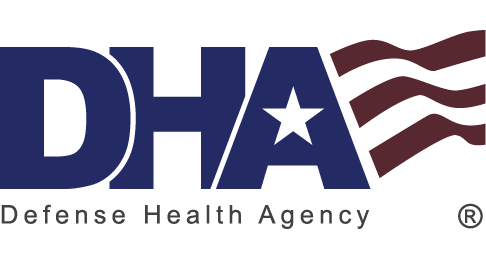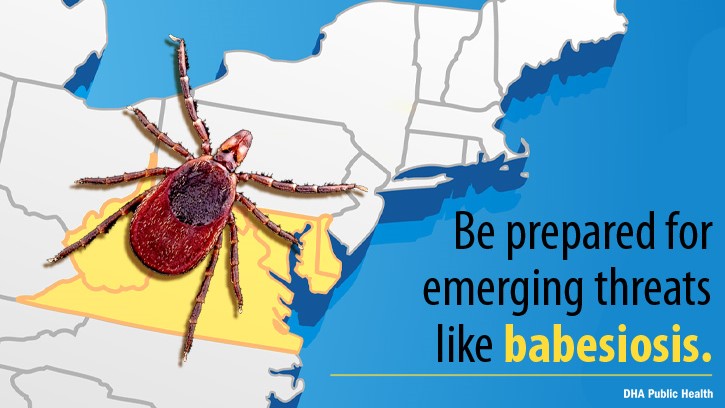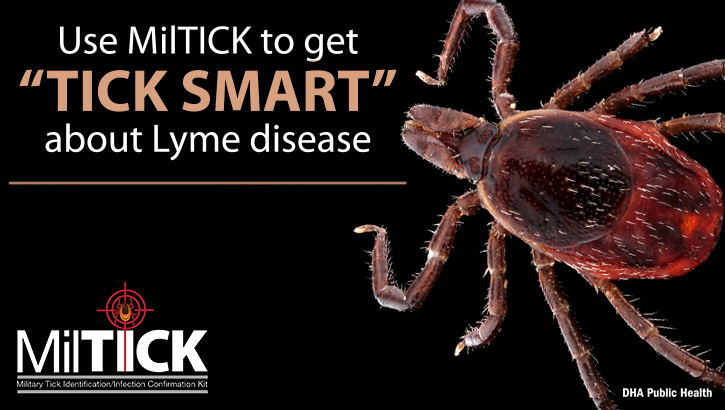July 09, 2025 | By Douglas Holl, Defense Health Agency Communications
It’s almost a rite of passage for service members conducting field training during the spring and summer months in Maryland—the tick check. This careful, whole-body scan can help prevent serious infection from deer ticks, which carry Lyme disease and now also carry the risk of co-infecting their victims with babesiosis.
Military public health experts warn the rise of babesiosis could lead to more complicated infections and diagnostic challenges. "One tick can carry many pathogens and can actually vector more than one of them at once," said Robyn Nadolny, chief of the Defense Health Agency-Public Health vector-borne disease branch in Aberdeen, Maryland. "You'll often see co-infected ticks that have both the agent of Lyme disease and the agent of babesiosis." This means that a single tick bite can potentially transmit both, leading to more complex symptoms and difficulties in diagnosis and treatment.
Babesiosis is a malaria-like disease that is more commonly found in the Northeast and upper Midwest of the United States. However, researchers found that the disease is spreading in the mid-Atlantic states, including Virginia, Maryland, Washington, D.C., and Delaware, due to a number of factors including changing weather patterns in recent years. It can cause flu-like symptoms, such as fever, chills, and fatigue, which can easily be mistaken for other illnesses, especially during the summer months, said Nadolny.
"I think the public health priority is simply getting the information out there to our providers and physicians, especially for clinicians seeing people that may or may not even know that they were bitten by a tick,” she said. "If they see flu-like symptoms in the summer, having an understanding of what the risks are in the area is important so that they don't miss something."
Nadolny was one of the lead authors of a newly published study in the Journal of Medical Entomology providing critical insights into the emergence of babesiosis in the mid-Atlantic region and documenting human cases and the presence of the causative agent “Babesia microti” in local tick populations.
"We know that the blacklegged tick (or the deer tick), which is the vector of babesiosis, has been in this area for a long time," explained Nadolny. "Babesiosis tends to follow in the shadow of Lyme disease by a number of years. Lyme gets established first, and that paves the way for babesiosis to come in after it."
Benefits of Collaboration
This trend highlights the importance of collaborative studies involving local, state, military, and academic experts. "We collaborated with state health departments, local health departments with other federal agencies, and with academic groups that are conducting research,” said Nadolny. “It's really helpful to have everybody bring their own information to the table and look at it all to understand: Are we seeing something that's a one-off, or are we seeing something that's a trend?"
Nadolny also mentioned the importance of the Mid-Atlantic Tick Summit, an annual regional conference focused on sharing information and fostering collaboration on tick-borne diseases and tick research within the mid-Atlantic region.
“This has been a real goldmine for collaborations because you get everybody that's working on the same issues in the same geographic region together for a day,” said Nadolny. “I think that making sure people can connect with other researchers and scientists and public health practitioners in their area of study is absolutely critical. We’re exposing new folks in the public health community to these opportunities as early as possible. I try to make sure everyone on my team gets to go to these regional meetings, especially since they're free.”
The impact of tick-borne diseases extends beyond individual health, particularly for military personnel and their families. "Even young folks and healthy folks can get quite sick with babesiosis," said Nadolny. "For our service members, this can lead to reduced readiness or not being able to deploy because they're sick, or missing training exercises because they're sick, or their spouse or child is sick."
To combat this growing threat, DHA-PH offers the Military Tick Identification/Infection Confirmation Kit, or MilTICK, program.
"Our flagship program is the MilTICK tick-testing program," said Nadolny. "Anybody that's under the Department of Defense umbrella can submit ticks that have been found biting a person or a family member to our lab. We identify and test those ticks, and then we report that result back to the person so they can have some actionable evidence to take to their physician."
The MilTICK program, now in its 30th year, serves a dual purpose: providing individuals with valuable information for diagnosis and treatment, and gathering data to track and understand changing tick-borne disease threats. "Having this sort of passive surveillance program through MilTICK allows us to have a detailed and granular understanding of what's happening at military installations across the country," said Nadolny.
Protecting Yourself from Tick Bites
Preventing tick bites is crucial to minimizing the risk of contracting Lyme disease, babesiosis, and other tick-borne illnesses. Nadolny recommends several strategies for those living in or visiting tick-prone areas:
- Treat clothing with permethrin. "It's always nice to reference the DoD Insect Repellent System, which is designed for military folks wearing uniforms, but it really applies to anybody," said Nadolny. "If you know that you're going to be out hiking or gardening in a tick habitat, I recommend treating those clothes with permethrin." Permethrin is a tick-killing insecticide that can be sprayed on clothing and remains effective for several washings. "You can buy a spray can of permethrin at any outdoor store," she continued. "Spray it all over the clothing, wait for it to dry, and then it's good for several washings. It's basically a poison for the ticks, but it doesn't affect mammals like us."
- Use insect repellent. Apply insect repellent containing DEET to exposed skin, following the manufacturer's instructions carefully.
- Wear protective clothing. When possible, wear long sleeves, long pants, and tuck pants into socks or boots to prevent ticks from accessing your skin.
- Wear light-colored clothing. This makes it easier to spot ticks crawling on your clothes.
- Carry tape for tick removal. If you find the ticks crawling on you, simply stick them to a piece of tape and fold it over so they can’t bite you, then throw it away.
- Perform tick checks. After spending time outdoors, thoroughly check yourself, your children, and your pets for ticks. Pay close attention to areas such as the hairline, ears, armpits, groin, and behind the knees.
"If you are wading through hip-high grass, all those ticks are going to be coming on your legs and they're going to be crawling up you,” said Nadolny. “If your shirt's tucked in and your pants are tucked in, then you have a much better ability to actually spot that tick crawling on your clothes and grab it."
Nadolny, who received her doctorate at Old Dominion University in Norfolk, Virginia, plans to continue her study of babesiosis in partnership with her former professor, Dr. Holly Gaff, who runs the ODU Tick Research Team. “We got a grant together looking at babesiosis hot spots along the Eastern Shore and right here on the ranges at Aberdeen Proving Ground,” said Nadolny. “We're going out here on the ranges at APG, catching small mammals and taking tissue samples from them to determine if they're infected with the tick-borne disease.”
Nadolny explained that by picking ticks off these animals, they see the species of ticks that are feeding on them and who's involved in what's called the zoonotic cycle of babesiosis. “Once you understand the cycle, then you can understand how to come into the cycle and break it.”
Resources
The Defense Health Agency supports our Nation by improving health and building readiness–making extraordinary experiences ordinary and exceptional outcomes routine.
NOTE: The mention of any non-federal entity and/or its products is for informational purposes only, and is not to be construed or interpreted, in any manner, as federal endorsement of that non-federal entity or its products.





